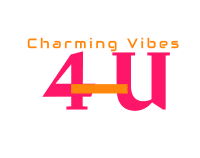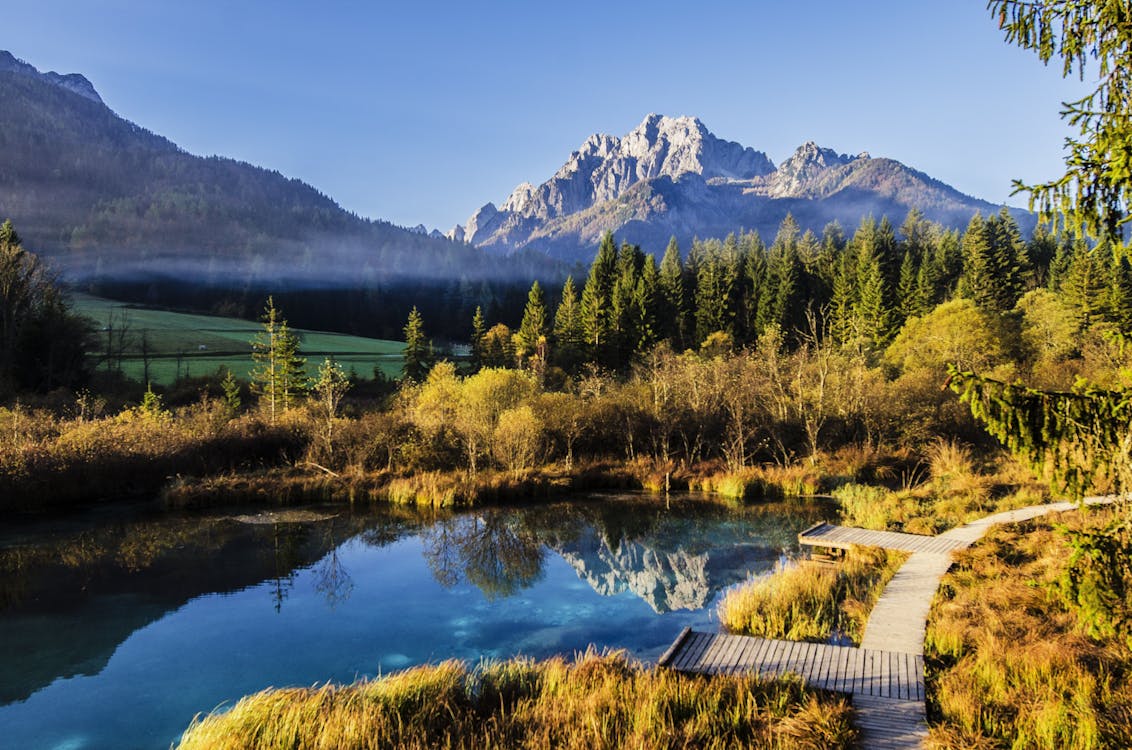
©pexels.com
Our website includes affiliate links. So, remember that we may receive commissions when you click our links and make purchases. Please read our legal disclaimer document for more information about our Affiliate disclaimer and other disclaimers like the Fair-Use disclaimer.
The country’s natural beauty is captivating, from the Alpine regions to the Mediterranean coast, the Pannonian plains, and the Dinaric Mountains. With a population of 2 million, Slovenia boasts one of Europe’s highest forest cover percentages. Its historical heritage and diverse culinary offerings further add to its allure, making it an energizing, though still under-the-radar, destination. Welcome to Slovenia!
The best times to visit Slovenia
Late spring and early summer offer pleasant weather and minimal crowds. Summer can be hot and crowded, especially in coastal areas. Autumn is beautiful but often rainy and foggy. Winters are cold and rainy, but offer great winter sports opportunities in the mountains. Ljubljana is best visited in December for the Christmas spirit.
May to October is the best time to explore the outdoors. Late spring brings wildflowers to the mountains, and June offers sunny skies for hiking and exploring cities. July and August are perfect for visiting spa resorts and caves in the Karst region. September and October provide plenty of sunshine and cooler temperatures, which are ideal for outdoor activities and wine tastings.
Carnival (Pust) is one of Slovenia’s most important cultural celebrations, held in February or March. The largest celebration is the Kurentovanje in Ptuj, attended by over 100,000 people yearly.
If you’d like to learn more about this topic, we suggest reading our related article.
Note: If you want to visit Slovenia during Advent, December, or Christmas, we recommend reading your related article.
Mount Triglav©pexels.com
How long to spend in Slovenia
Slovenia is often seen as a country where tourists visit Croatia or Italy. Even for those passing through, we recommend visiting famous places like Lake Bled, Slovenian coastal cities, and the Postojna Cave for at least three days.
We strongly recommend a 7- 10 day stay for a more in-depth visit. This allows for exploration of famous places like Ljubljana and Lake Bled, as well as off-the-beaten-path destinations. It also provides an opportunity to visit the eastern part of Slovenia, where you can fully grasp the cultural differences of each region you travel to, making it the perfect way to experience Slovenia.
With a week or more, you can fully grasp the cultural differences of each region you travel to, making it the perfect way to experience Slovenia.
How to get to Slovenia
Slovenia has three international airports: Ljubljana, Portorož, and Maribor. However, the main airport for commercial flights is Ljubljana Jože Pučnik Airport. It lies about 30km north of Ljubljana, in the direction of Bled. From Ljubljana Airport, you can reach Ljubljana by taxi, rental car, or public bus. Since direct flights to and from Ljubljana are often expensive and limited, locals sometimes prefer flying from neighboring countries’ airports. Consider foreign airports like Venice, Trieste, Treviso, Milan, Zagreb, Graz, or Vienna for cheaper flight options, depending on your destination in Slovenia.

Piran©pexels.com
A quick guide to Slovenia’s different regions
Northwestern Slovenia is home to the Julian Alps, Triglav National Park, and Soča Valley. Furthermore, the Slovenian mountains are primarily located in the northern part of the country, with the Alps divided into three parts: the Julian Alps, the Kamnik-Savinja Alps, and the Karawanks. Triglav National Park, named after Slovenia’s highest peak, Mount Triglav, is the country’s sole national park in the Julian Alps. Slovenia’s northern region has hills and foothills, including the Škofja Loka Hills, Cerkljansko Hills, Polhov Gradec Hills, and Pohorje Hills. The sparsely populated Slovenian mountains and hills provide an ideal setting for outdoor activities such as hiking, cycling, whitewater rafting, rock climbing, and paragliding. Additionally, a picnic by a mountain lake offers an opportunity to enjoy the incredible views of the peaks.
Ljubljana Region – central Slovenia
Slovenia’s capital, Ljubljana, oozes charm and history, making it a must-visit destination. With 300,000 inhabitants, it keeps its small-town charm while being the largest city in Slovenia. So, you can explore the historical city center, visit landmarks like Prešeren Square and the Dragon Bridge, and relax in the city’s green spaces on foot. Additionally, don’t miss the opportunity to take a funicular ride to Ljubljana Castle for great city views. More importantly, situated at the crossroads of major highways, it’s easily accessible from all directions. Ljubljana is a vital university town with over 50,000 students.
Southwestern Slovenia – the Karst region
The region of Notranjska is full of karst formations and offers numerous possibilities for exploration. So, visit the famous Slovenian caves such as Postojna or Škocjan. Nearby, in the Kras Region, you can enjoy traditional villages and taste authentic Slovenian cuisine, including the local wine, Teran.
Istria and the coast
Slovenia’s 47 kilometers of coastline, stretching along its southwestern border from Italy to Croatia, is a sight to behold. The coastal area offers a Mediterranean climate, profound Italian influence, and delicious Istrian cuisine. Major coastal towns are Koper, Izola, and Piran, each with a unique charm. More importantly, Piran is particularly remarkable with its Venetian architecture and stunning position at the very end of a narrow peninsula. So, visitors can enjoy Istrian cuisine and explore the local wine region throughout the coastal towns. Make sure to include it when planning your trip to Slovenia.
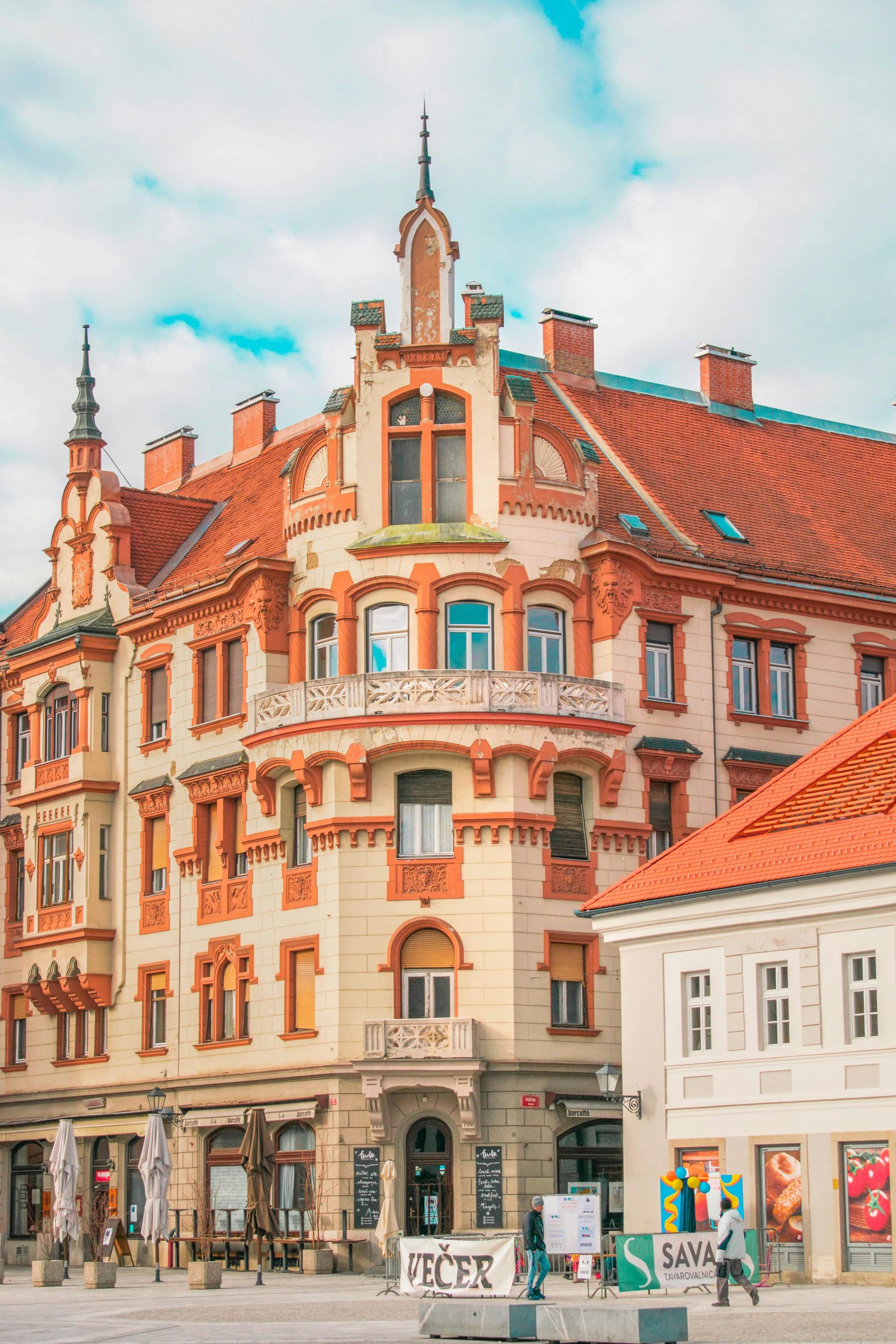
Maribor©pexels.com
Eastern Slovenia
The eastern part of Slovenia includes the city of Maribor, known for the world’s oldest vine, over 400 years old, and for producing a unique wine. The Pohorje Hills are perfect for hiking and skiing. The Štajerska region is excellent for wine enthusiasts, with charming wine cellars. Other attractions include Ptuj, the oldest city in Slovenia with the biggest carnival in the area, and numerous thermal spas (like Rogašla Slatina or Olimije).
Southeastern Slovenia
If you’re looking to explore off the beaten path, head south! You’ll be treated to expansive forests, chilly winters, and remote villages that seem lost in the woods. Wildlife enthusiasts will be pleased to know that bear safaris have recently gained popularity in this region. There’s so much more to discover beyond what I’ve mentioned, such as the charming village of Kostanjevica na Krki or the picturesque wine region of Bizeljsko, and a bit of an adventurous spirit is all you need to explore this lovely area that few others visit. You won’t regret making the effort to come here!
Where to stay in Slovenia – best bases
Slovenia is a small country, and it’s easy to travel quickly between tourist destinations. For example, driving across the country from Piran (on the coast in the southwest) to Maribor (in the far northeast) will only take 3 hours. However, to avoid spending too much time in the car each day, it’s a good idea to choose a couple of different bases when planning your trip to Slovenia, from which you can quickly visit the main sights in the surrounding area.
Here are our recommendations:
Ljubljana – for an urban feel and countrywide sightseeing
Ljubljana, located in the middle of Slovenia, is the perfect base for day trips nationwide. It offers various accommodations, restaurants, and shopping, and is the bus and train transportation hub.
Bled – for convenience and access to the mountains
Bled is the best base for exploring the hills, with many accommodations and restaurants. However, it can be very touristy and expensive, especially during peak times.
- Consider Bohinj near Bled for a budget-friendly option, with a great campsite near the Savica Waterfalls. Also, Bovec or Tolmin are ideal bases for exploring the Soča Valley.
Piran – for access to the coast
If you plan to visit Piran, remember that one day is enough to explore the small city, similar to Croatian Rovinj. It’s a convenient base for accessing other coastal towns. You can’t drive into the city, so park in a garage and use the free shuttles. Limited grocery stores are available, so plan accordingly.
Close to Piran is Portorož, the second most popular tourist destination in Slovenia after Bled. Portorož has high-end hotels, a long artificial sandy beach, and is known for its casinos. For more affordable options, consider Izola or Koper. The best camping spot on the coast is Camp Lucija.
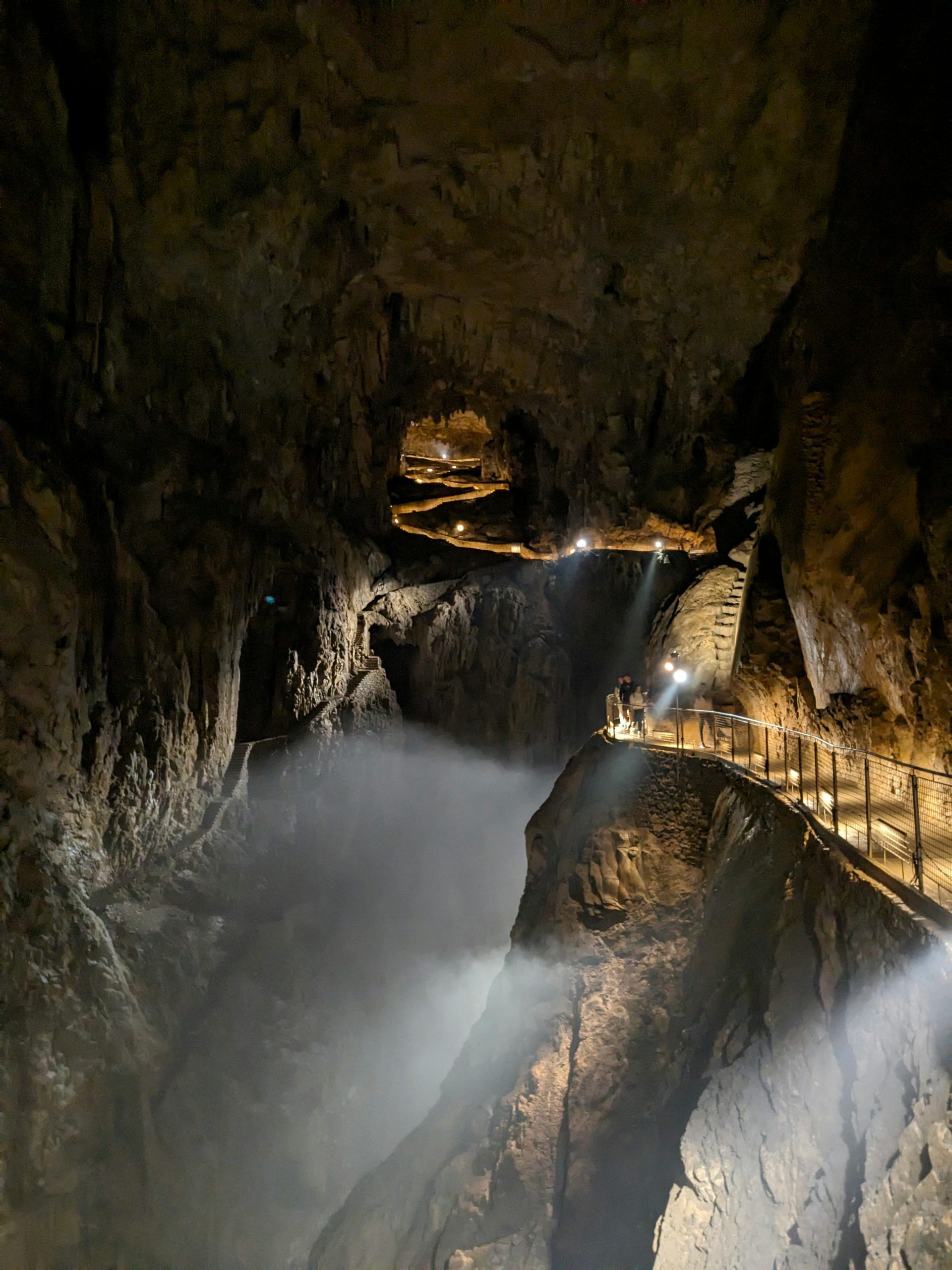
Skocjan caves©pexels.com
Postojna and Škocjan Caves
We are considering visiting one of our impressive caves as another must-do activity. The most popular one in the country is Postojna Cave, which has an electric train that takes you underground. On a journey, you can observe substantial cave halls with stalactites and stalagmites covering every surface. For a bit quieter alternative, visit Škocjan Caves.
Where to go on a first trip to Slovenia
Slovenia is blessed with incredible natural beauty and offers a variety of destinations to explore, from the Alps to the coast. If you have limited time, I recommend visiting Ljubljana, Lake Bled, Postojna Cave, Piran, and Triglav National Park for a diverse experience that includes mountains, city life, underground exploration, and seaside relaxation. These destinations are all relatively close to each other, making it the perfect introduction to Slovenia.
When visiting Slovenia, explore Ljubljana, the capital city, and the picturesque Lake Bled. Consider visiting Postojna Cave or Škocjan Caves for a unique underground experience. Experience coastal Slovenia in Piran and explore Triglav National Park, which offers diverse natural landscapes and popular hiking trails.

Ljubljana – The Capital of Slovenia©pexels.com
Other places to visit and things to do
- Go whitewater rafting in Soča River Valley
- Enjoy wine tastings in the Štajerska or Istria wine regions
- Go on a bear safari at Kočevje Virgin Forest Area
- Visit the coastal towns (Piran, Izola, Koper)
- Go on a cave adventure at Postojna Cave or Škocjan Caves
- Ride a traditional Pletna boat on Lake Bled
- Visit charming little villages in the Kras Wine Region
- Go hiking at Triglav National Park
- Relax in one of the thermal spas in the Eastern part of Slovenia
- Be amazed by our Alpine waterfalls (Savica, Peričnik, Martuljek)
- Visit the castle in the cave (Predjama Castle)
- Pet the white horses in Lipica
- Bike through the Logarska Valley
- Enjoy the sunset from Sečovlje salt pans
- Walk the tunnels of the Idrija Mercury Mine
Transportation and getting around in Slovenia
We highly recommend renting a car for your visit to Slovenia. Many of the country’s main attractions are its natural landscapes, which are often only accessible by private transportation or guided tours. While public transportation is convenient for traveling between towns, having a car is essential for reaching more remote natural areas, especially in the mountains.
Note: If you want to learn more about how to get around Slovenia, we recommend reading our related guide.

©pexels.com
Renting a car and driving
Please remember that the cost of renting a car in Slovenia depends on the season and the type of car you choose. It typically ranges from €40 to €60 per day. Car rentals are available in major cities like Ljubljana and Maribor, and at tourist destinations like Lake Bled and Ljubljana Airport. International companies like Hertz, Avis, Europcar, Sixt, Enterprise, and local rental agencies operate in Slovenia.
Standard vs. automatic transmission
“Most cars in Slovenia have standard transmissions (stick-shifts), but rental companies typically offer a few automatic cars. However, you may need to pay extra for an automatic. Due to limited availability, booking well in advance is important as they tend to sell out.”
Road conditions
Slovenia has a well-developed road network, including motorways, expressways, main roads, and secondary road networks. Some mountain roads are narrow and in poor condition, so caution is advised. Driving carefully after heavy rains and during winter is essential, as some mountain roads may be closed.
Tolls
Slovenia’s motorways and expressways require tolls; if you own a car, you must purchase a transponder. Short-term transponders are available for rent from particular companies. A separate toll is also required at the Karawanken tunnel on the border with Austria.
Note: To buy a Slovenian vignette online, click the following link.
Driving
Regarding driving style, people in Slovenia generally drive courteously and are accommodating and easy-going on the road. The main roads are mostly very safe and in good condition, making driving here relatively easy for the most part.
Parking in cities and larger towns
In Slovenia, many city centers are pedestrian-only, so you’ll need to park in a P+R area and use public transportation to get into the city. Finding parking in allowed regions can be challenging, and fees can be high. Look for “do not park here” signs, and consider using parking apps for payment. Check for free parking during weekends or after certain hours.
Public transportation
Train travel
When traveling by train in Slovenia, remember that the rail network has existed since the 19th century. So, the train travel within the country can be time-consuming, with Ljubljana serving as the central hub. You can reach various destinations from Ljubljana, including Maribor, Koper, Bled, and Zagreb in Croatia. Train travel in Slovenia is relatively inexpensive, but booking in advance is advisable, especially on Sundays and during winter. Different types of trains are available, with InterCity (IC) trains being faster than regional (RE) trains. Despite scenic routes, train travel in Slovenia is generally slower than other transportation options. Most trains have overhead luggage racks, and some trains allow bicycles.
And lastly, if you want to book a train or bus ticket easily, we recommend using Omio.
Traveling by bus
You can reach almost any destination in Slovenia by bus, with Ljubljana as the central hub. Various bus companies in Slovenia offer tickets online or at bus stations. Local buses in major cities operate on a cashless system. Most buses have storage space above the seats or in luggage compartments under the bus. Be sure to remind the driver about your bags before getting off the bus to avoid them being left behind. We recommend using the bus when planning your trip to Slovenia. It’s affordable and more widespread than the train, although not as flexible as driving by car.
But, if you want to book a train or bus ticket easily, we recommend using Omio.
Where to buy train and bus tickets
Consider booking your public transport tickets directly with the service provider. However, you may find it challenging to compare routes and prices. In that case, Omio is an aggregator that displays options for public transport routes worldwide. The site has a user-friendly design, allows easy price comparison, and offers the convenience of keeping all your bookings in one place, albeit at a slightly higher cost than booking directly.
Taking taxis and using ride-share apps
Taxis are available in larger cities and are reasonably priced for local rides. However, hiring a cab for travel outside the city can quickly become expensive. Taxis are rarely hailed on the streets; instead, you can call a cab or wait at assigned taxi areas in the town. Ride-hailing apps like Uber are not available in Slovenia. However, there is one app, https://prevoz.org/, mainly used by locals to share a car and save on travel expenses between regions. It might be worth considering if you’re on a tight budget and want to meet some locals!
Hotels & accommodation
Slovenia offers a variety of accommodations to fit every budget. Large international hotels are in Ljubljana, Bled, and Portorož. However, most hotels are small and family-owned, adding charm to the stay. Additionally, there are B&Bs, guesthouses, and pensions, especially in natural areas. Expedia.com, Airbnb, and Booking.com offer popular options for different budget travelers. We recommend staying in small hotels when planning your trip to Slovenia. They are usually more affordable.
Average travel costs
Accommodation
Accommodation in Slovenia typically costs € 40 to € 80 per night for a double room. Still, prices can be 2 to 3 times higher during peak seasons. Popular areas like Ljubljana, Bled, and the coast have significantly higher accommodation costs than Slovenia’s southern or eastern parts.
Meals
A modest restaurant meal in Slovenia typically costs around 20 euros per person. If you plan to cook your food, 45 euros should cover the essential groceries. Like many other countries, food prices in Slovenia have been increasing significantly in recent years.
Alcohol
Alcohol is more affordable compared to neighboring countries. A 0.5 l of domestic beer in the supermarket costs 1 euro .25. At the same time, a bottle of good quality red table wine is around 10 euros.
Car rentals
The cost of renting a car is around 40 euros per day.
Taxi rides
The cost of a taxi ride from Ljubljana Airport to Ljubljana city center typically varies between €20 and €45. Taxis generally have a starting fee ranging from €0.80 to €1.50 and charge between €0.70 and €1.70 per kilometer. For a ride from Ljubljana city center to a residential neighborhood outside of the city center, the fare would be approximately €8. Prices are higher during nighttime.

©.pexels.com
Public transportation
Public transportation in Slovenia is generally affordable. Trains are slightly more expensive than buses, but they may be a better choice depending on your destination. For example, a train ride from Ljubljana to the coast costs around €20, while a bus ride for the same route can cost half that.
Entrance tickets
Entrance ticket prices for museums and other sites vary by destination. Most city museums charge between €5 and €15 per person. Postojna Cave charges €30 per person for the cave alone and €50 for additional museums and exhibitions. Škocjan Caves charge around €20 per person.
Guided tours
The cost of guided tours varies depending on the destination and activity. For example, a 3-hour rafting trip in the Soča River Valley costs €65 per person. In Ljubljana, a 3-hour group bike tour costs €30 per person, while the Ljubljana Pub Crawl costs €20 per person. The cost of a private tour will vary significantly, but it will generally be more expensive in all cases.
Paying for things and using credit cards
Using credit cards
Credit and debit cards are widely accepted in almost every shop and store across Slovenia. However, it’s always a good idea to carry some cash with you, as electronic payment systems may be temporarily unavailable or have issues, especially in remote areas. ATMs are available throughout cities and towns, and most gas stations are on the highways.
Tipping
Tipping is not mandatory; it is considered a reward for excellent service. Most people tip about 10% at restaurants and bars. Unlike in many other European countries, tipping on the bill when paying by card is possible but rarely done. It’s best to leave the tip in cash whenever possible.
Safety
Slovenia is considered one of the safest countries with low crime rates. However, it’s essential to be cautious in the mountains. Tourists often require rescue because they are unprepared. Ensure you have proper equipment, including good hiking shoes, and always carry a physical map. Be prepared for sudden weather changes, and don’t overestimate your abilities. Start with smaller mountains before attempting more challenging peaks.
Slovenia travel tips
Please remember the following about Slovenia:
- Different regions in Slovenia have distinct cultural differences, including varying dialects.
- Each region offers specific foods, such as Kranjska sausage in Gorenjska, Trout in Soča Valley, Bled cake in Bled, and Gibanica cake in the eastern region.
- Slovenians are generally friendly, especially in rural areas where locals may invite you for a meal or homemade wine.
- Avoid discussing politics, religion, migrants, and Yugoslavia to prevent heated conversations.
- Younger Slovenians have a high level of English, but older generations and those in remote areas may need to be fluent. Italian is more commonly spoken in coastal areas, while German is widespread in the north.
- Useful phrases: Most people only visit Slovenia once, so you’re probably not worrying too much about studying the language and gaining fluency. Nonetheless, here are a couple of useful phrases.: Good morning – Dobro jutro, Good afternoon – Dober dan, Good evening – Dober večer, Thank you – Hvala, Please or you are welcome – Prosim.
Take a look at
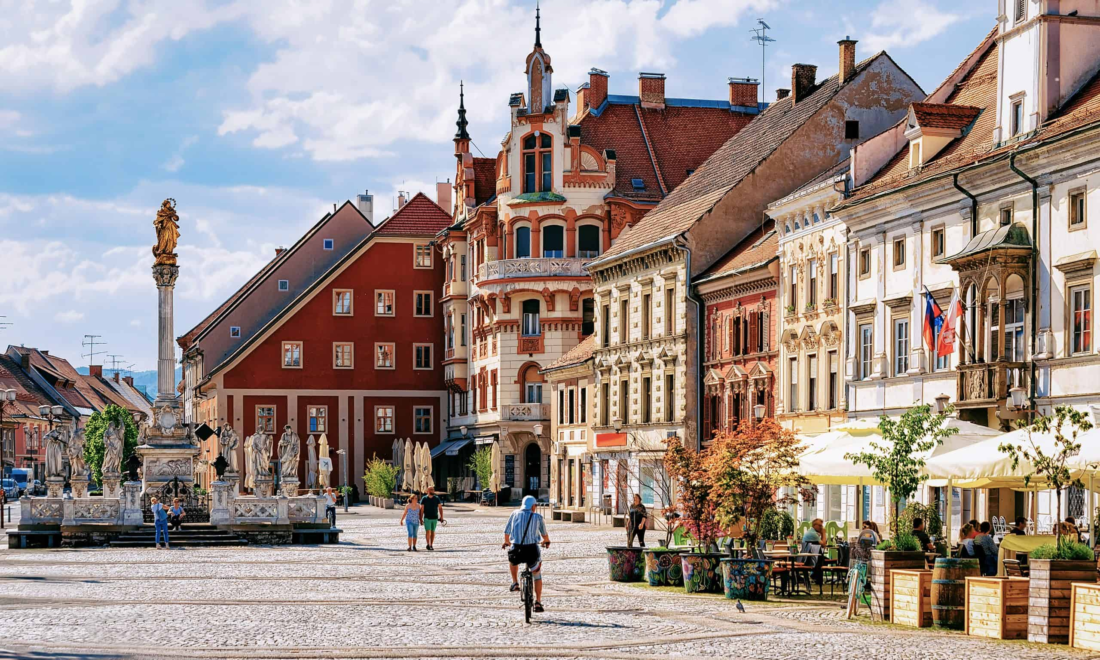
Maribor Guide
In this Maribor Guide, we will give you some tips
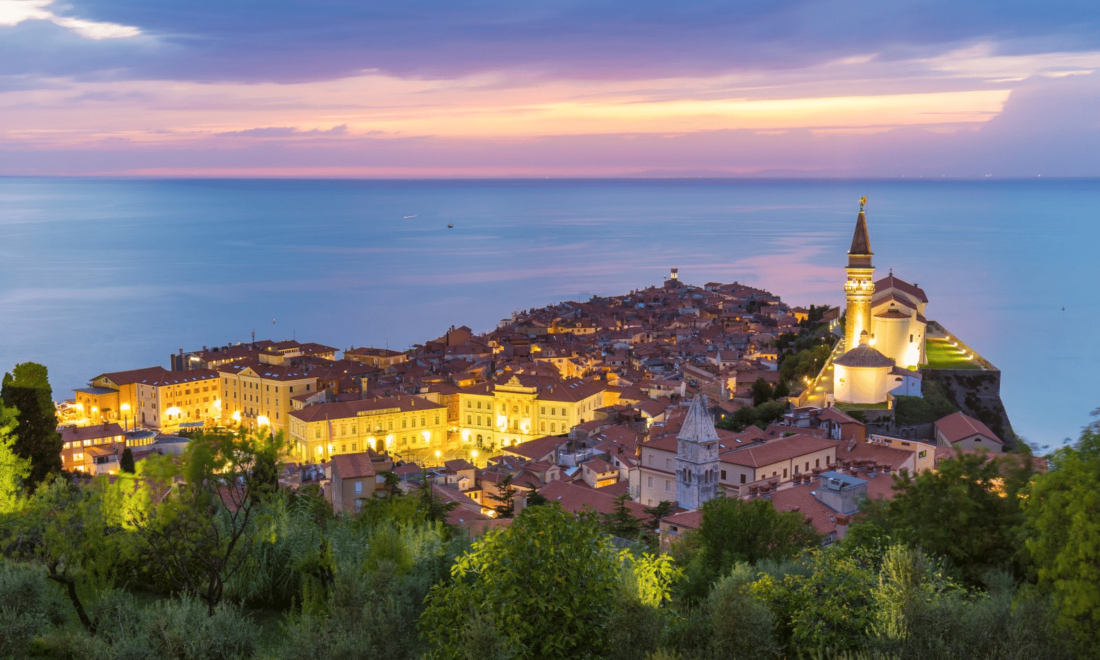
Discover Piran
In this Piran guide, we will briefly introduce the little
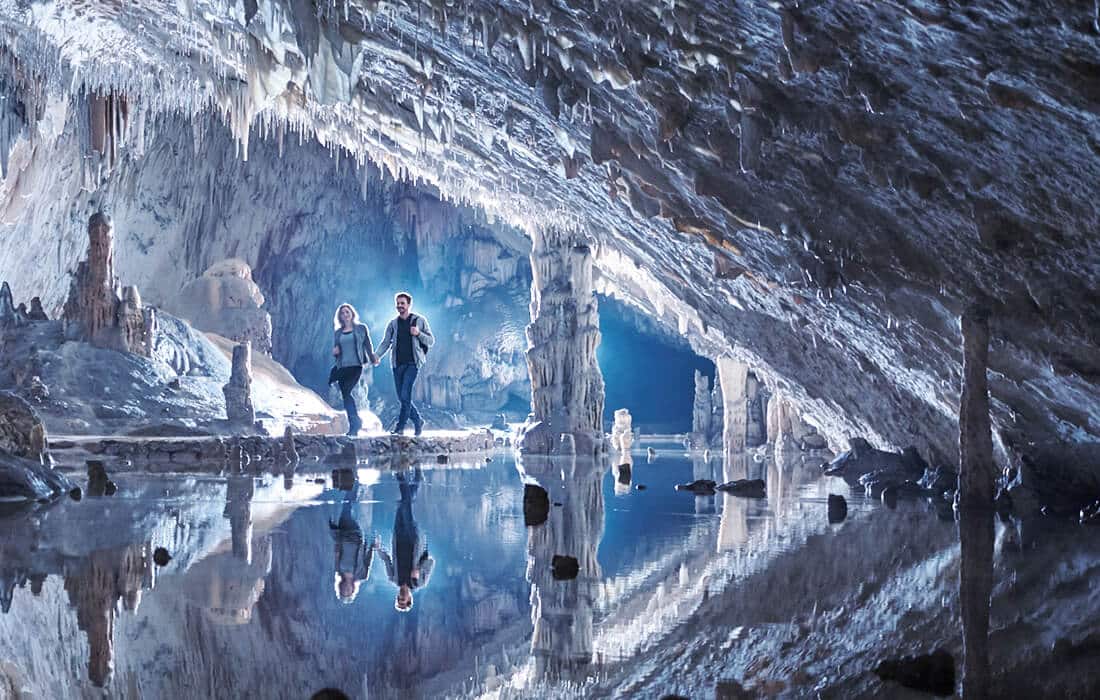
Postojna Cave
In this article about Postojna Cave, we will introduce you
References and sources:
Photo credits:
Feature photo credits: pexels.com
